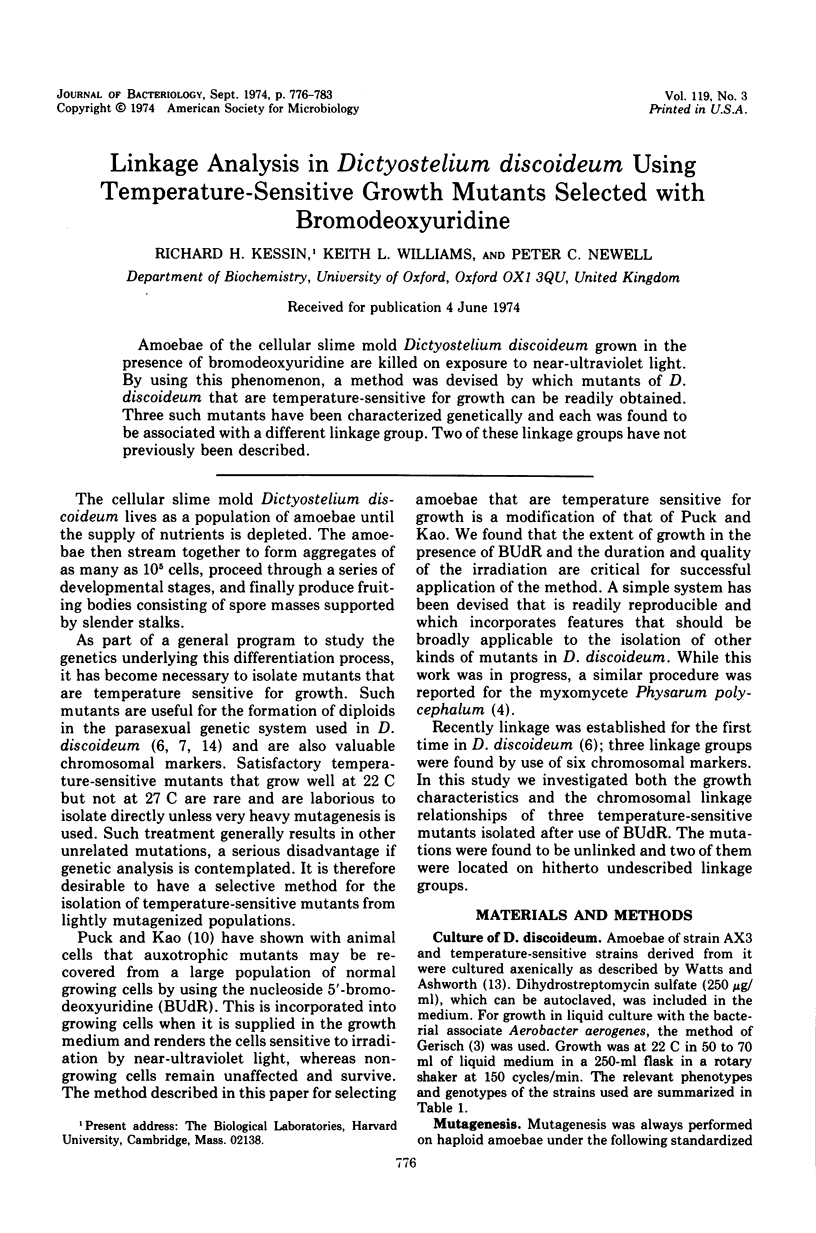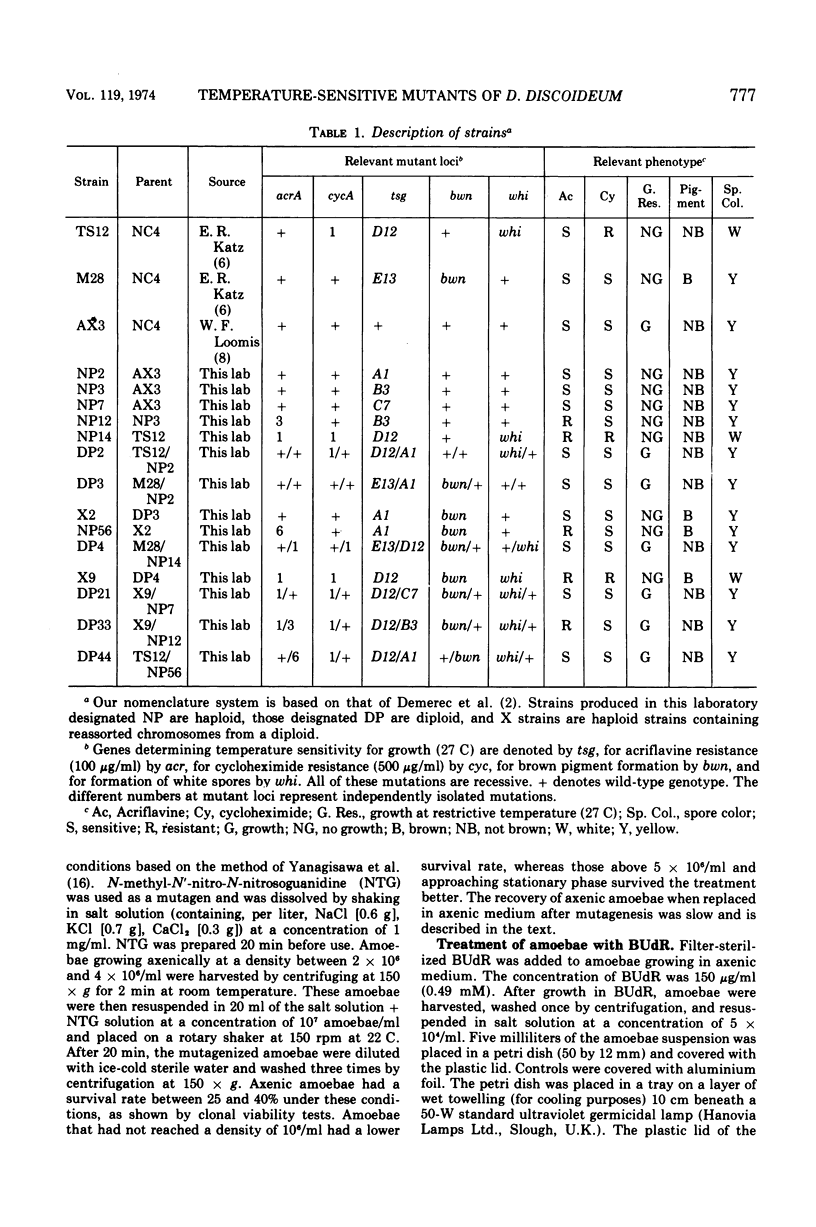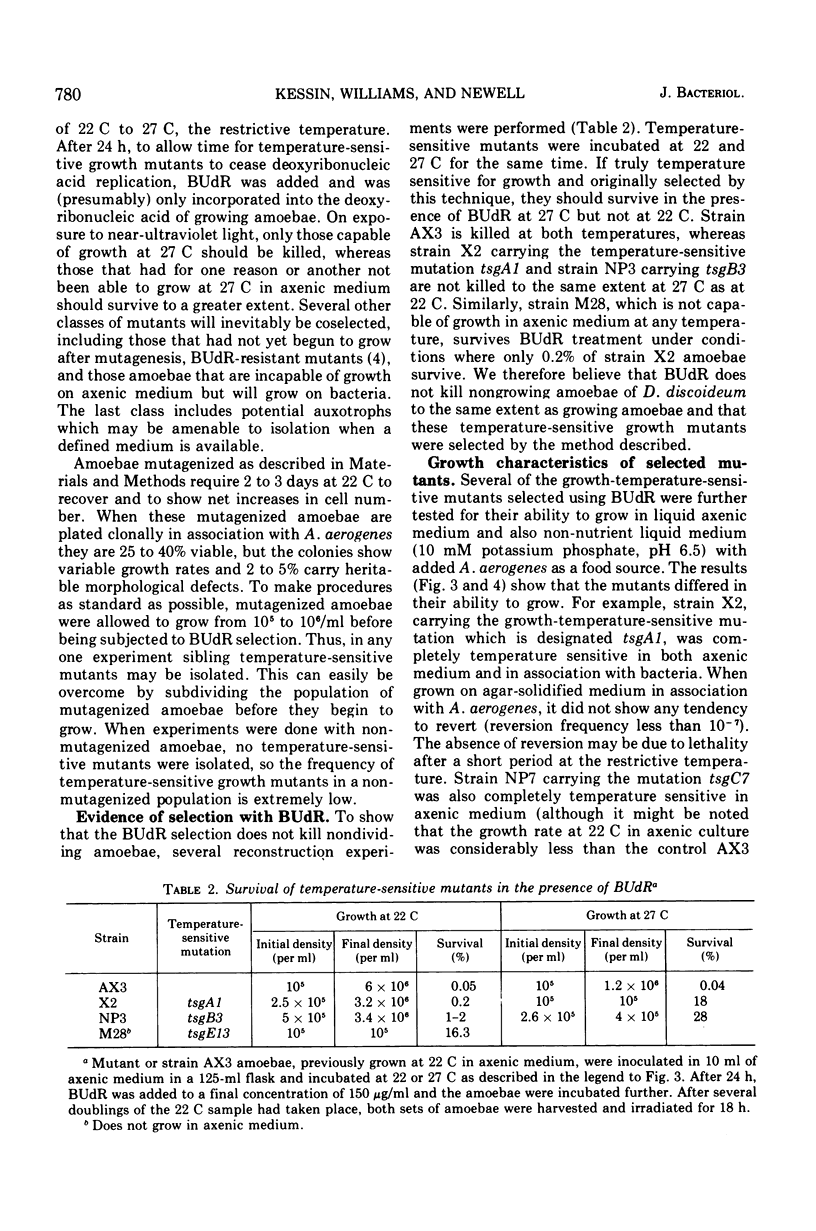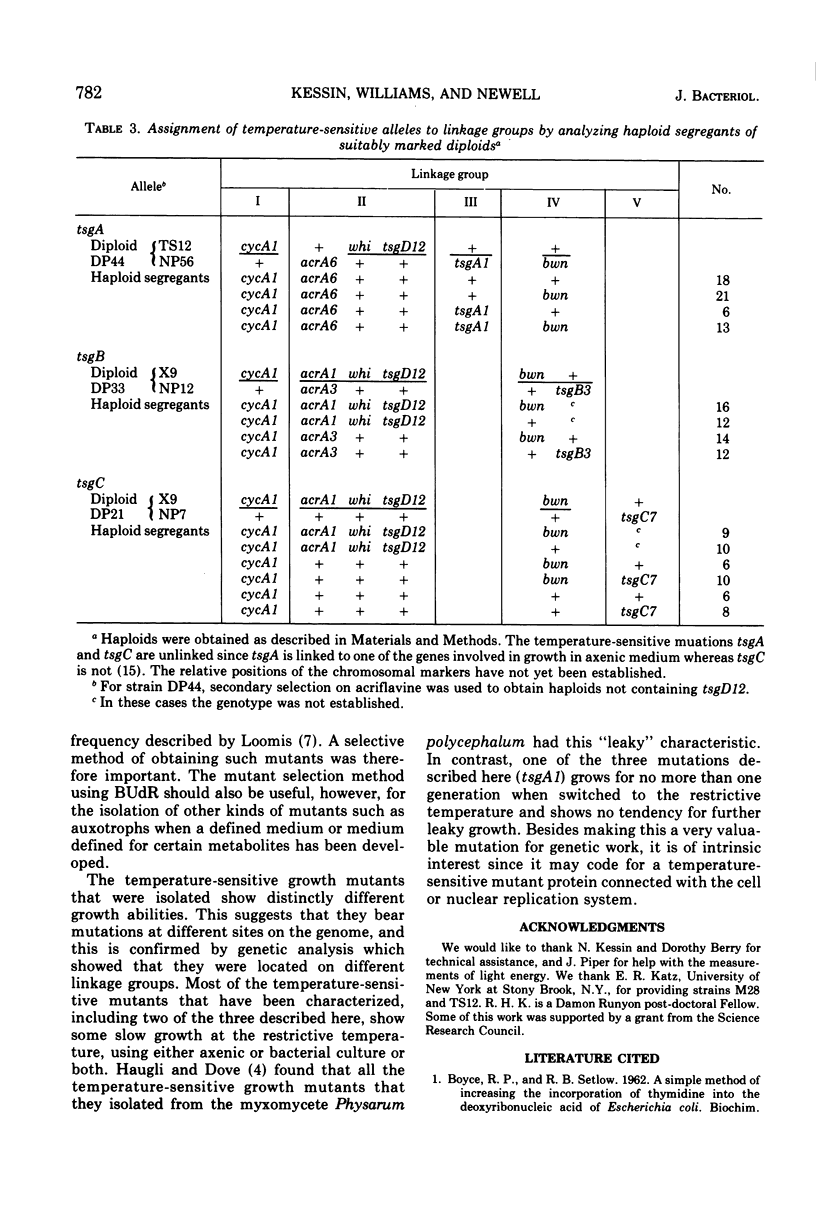Abstract
Amoebae of the cellular slime mold Dictyostelium discoideum grown in the presence of bromodeoxyuridine are killed on exposure to near-ultraviolet light. By using this phenomenon, a method was devised by which mutants of D. discoideum that are temperature-sensitive for growth can be readily obtained. Three such mutants have been characterized genetically and each was found to be associated with a different linkage group. Two of these linkage groups have not previously been described.
Full text
PDF







Selected References
These references are in PubMed. This may not be the complete list of references from this article.
- Demerec M., Adelberg E. A., Clark A. J., Hartman P. E. A proposal for a uniform nomenclature in bacterial genetics. Genetics. 1966 Jul;54(1):61–76. doi: 10.1093/genetics/54.1.61. [DOI] [PMC free article] [PubMed] [Google Scholar]
- Haugli F. B., Dove W. F. Mutagenesis and mutant selection in Physarum polycephalum. Mol Gen Genet. 1972;118(2):109–124. doi: 10.1007/BF00267082. [DOI] [PubMed] [Google Scholar]
- KAFER E. An 8-chromosome map of Aspergillus nidulans. Adv Genet. 1958;9:105–145. [PubMed] [Google Scholar]
- Katz E. R., Sussman M. Parasexual recombination in Dictyostelium discoideum: selection of stable diploid heterozygotes and stable haploid segregants (clones-temperature sensitive-ploidy-fruiting bodies-spore-slime mold). Proc Natl Acad Sci U S A. 1972 Feb;69(2):495–498. doi: 10.1073/pnas.69.2.495. [DOI] [PMC free article] [PubMed] [Google Scholar]
- Loomis W. F., Jr Sensitivity of Dictyostelium discoideum to nucleic acid analogues. Exp Cell Res. 1971 Feb;64(2):484–486. doi: 10.1016/0014-4827(71)90107-8. [DOI] [PubMed] [Google Scholar]
- Loomis W. F., Jr Temperature-sensitive mutants of Dictyostelium discoideum. J Bacteriol. 1969 Jul;99(1):65–69. doi: 10.1128/jb.99.1.65-69.1969. [DOI] [PMC free article] [PubMed] [Google Scholar]
- Puck T. T., Kao F. T. Genetics of somatic mammalian cells. V. Treatment with 5-bromodeoxyuridine and visible light for isolation of nutritionally deficient mutants. Proc Natl Acad Sci U S A. 1967 Sep;58(3):1227–1234. doi: 10.1073/pnas.58.3.1227. [DOI] [PMC free article] [PubMed] [Google Scholar]
- Watts D. J., Ashworth J. M. Growth of myxameobae of the cellular slime mould Dictyostelium discoideum in axenic culture. Biochem J. 1970 Sep;119(2):171–174. doi: 10.1042/bj1190171. [DOI] [PMC free article] [PubMed] [Google Scholar]
- Williams K. L., Kessin R. H., Newell P. C. Genetics of growth in axenic medium of the cellular slime mould Dictyostelium discoideum. Nature. 1974 Jan 18;247(5437):142–143. doi: 10.1038/247142a0. [DOI] [PubMed] [Google Scholar]
- Yanagisawa K., Loomis W. F., Jr, Sussman M. Developmental regulation of the enzyme UDP-galactose polysaccharide transferase. Exp Cell Res. 1967 May;46(2):328–334. doi: 10.1016/0014-4827(67)90070-5. [DOI] [PubMed] [Google Scholar]


